CHAPTER 8
UNUSUAL CRYSTAL SHAPES

Picture #59
3-inch-wide Arkansas Quartz Point with Attached Cluster
Let’s look at some more complicated shapes.
This Arkansas quartz crystal is about three inches long and has a whole cluster adhering to one side.
In all my years of collecting, I have only seen two pieces like this.
Please notice that the crystal has one extremely clear facet at the tip while all the other faces have interesting etched and striated patterns.
It is not the clearest crystal in the world, but the little cluster riding on top of it makes it very special indeed.
It is a miracle that the little crystals survived the mining process in such good condition.
If you think about it, mining in mud is like trying to dig up glassware from a swamp.
It is really easy to break crystals if you are not careful.
It is impossible to fully see what you are doing.
The tiny crystals survive because they are embedded in thick, wet clay.
While the clay prevents the miners from seeing the stones, it cushions delicate crystals as they come out of the ground.
After the crystal dries in the sun for a few days, the dry clay blasts right off the crystal when you hose it down with water.
You can take a delicate stone and bring it back to original perfection by carefully cleaning it with water, small picks and an ultrasonic cleaning tank.
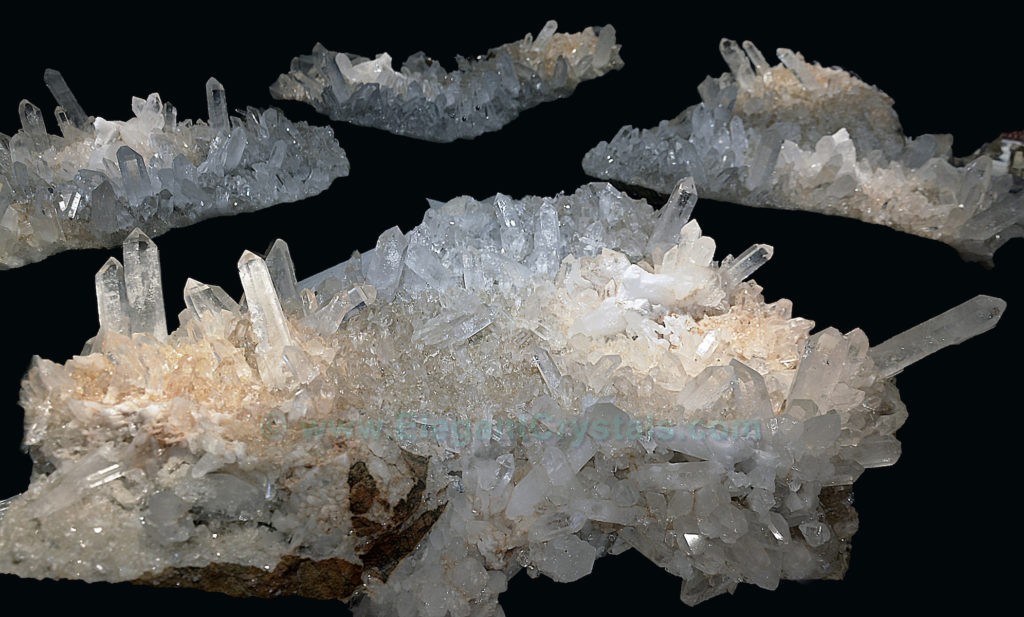
Picture #60
300-pound Arkansas Cluster
Some Arkansas clusters grow to immense sizes.
While the individual crystals on this piece are less than 10 inches long, the entire flat cluster is almost four feet wide.
This photo was an experiment in optics.
The crystal is positioned in the corner of a room where two large mirrors meet.
These special metal mirrors provide better reflections than most of the glass mirrors in use.
They are chrome-plated sheets of plastic that create superior optics.
This complicated cluster has many good viewing angles.
I decided to photograph all four sides in one picture.
With these wonderful lightweight mirrors, I was able to achieve my objective.
I can show you what the back of the crystal looks like,
even in an inaccessible corner of the room.
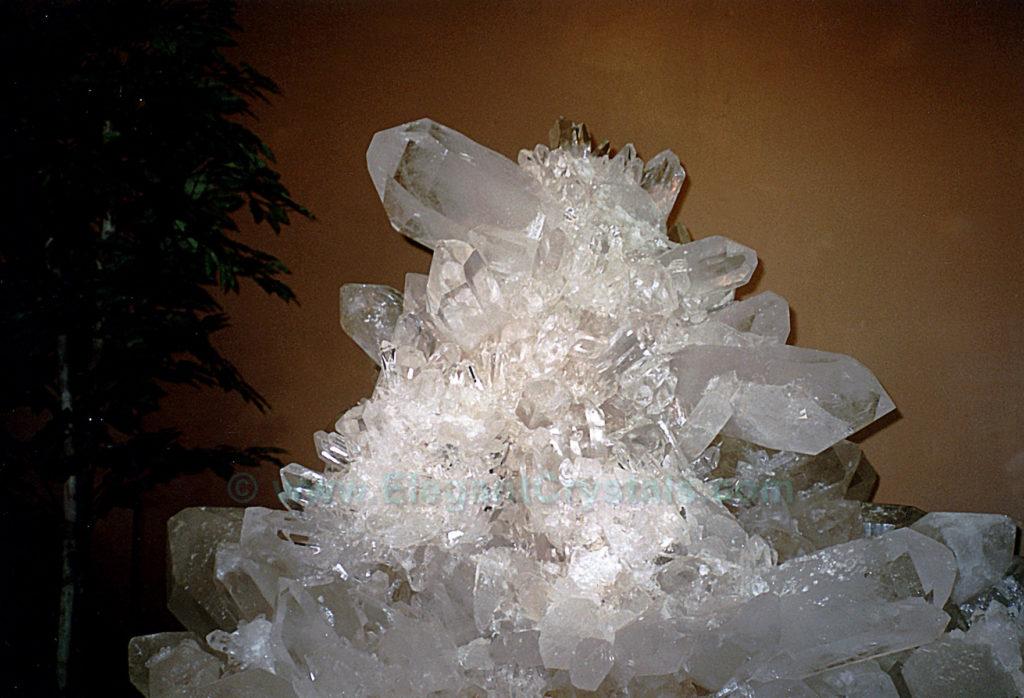
Picture #61
Coleman Mine 1,000-pound Arkansas Quartz Cluster
The hills around Hot Springs, Arkansas are one of the few places where giant quartz clusters can be found.
Brazil is another primary location for such large clusters.
This particular piece of Arkansas quartz weighs over 1000 pounds, yet it has a hollow center that allows light to shine all the way through it.
Most of the crystals pictured in this book were dug in modern times, meaning the past 10 to 20 years.
Before that time, there is a legend about a giant cluster in the hills of Arkansas that was found by the U.S. Army Corps of Engineers.
This occurred during World War II, when the first radar defense systems were being set up all across America.
When they went to calibrate the system in Arkansas, something was scrambling their radio transmissions.
The Army Corps tracked the problem back to a hillside in western Arkansas.
After hiking through the rugged mountains, explorers found a huge cluster of quartz crystals that projected from a hilltop.
Reportedly, the crystals were up to six feet long and weighed many tons.
Perhaps you remember how quartz crystals can affect various electronic energies.
In this case, the massive, naturally resonant quartz was disrupting radar-wave fields for hundreds of miles around.
The Army Corps dynamited and demolished this multimillion-dollar cluster.
America’s biggest crystals wound up as rubble in the name of National Security.
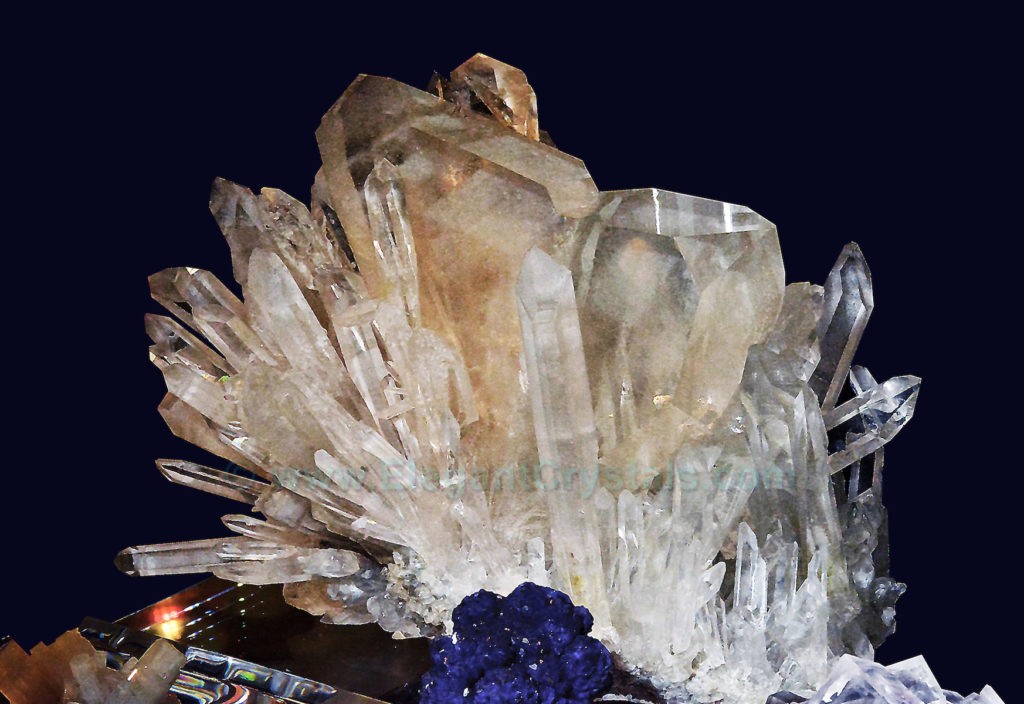
Picture #62
Twelve-inch-wide Arkansas Quartz
with “Japanese Twin” Formation
The orange glow on this Arkansas cluster comes from deposits of rust trapped between the crystals.
Iron can exhibit various colors inside of quartz crystals, ranging from yellow to orange, red, gray, silver, or brown.
These iron compounds form intricate and beautiful patterns inside of quartz.
The blue crystal in front of the quartz is natural azurite from Namibia.
An unusual feature of this large quartz cluster is the two broad, flat crystals joined together at an angle of 84° 33’ to each other.
This is called a Japanese twin, as the formations were first identified in Japanese quartz.
In Arkansas, you will rarely find Japan-twinned crystals.
These are extremely valuable crystals that may cost thousands of dollars per pound.
A one-pound pair of Japanese twin crystals is considered gigantic.
Japanese twins are mostly found as one or two-inch long specimens.
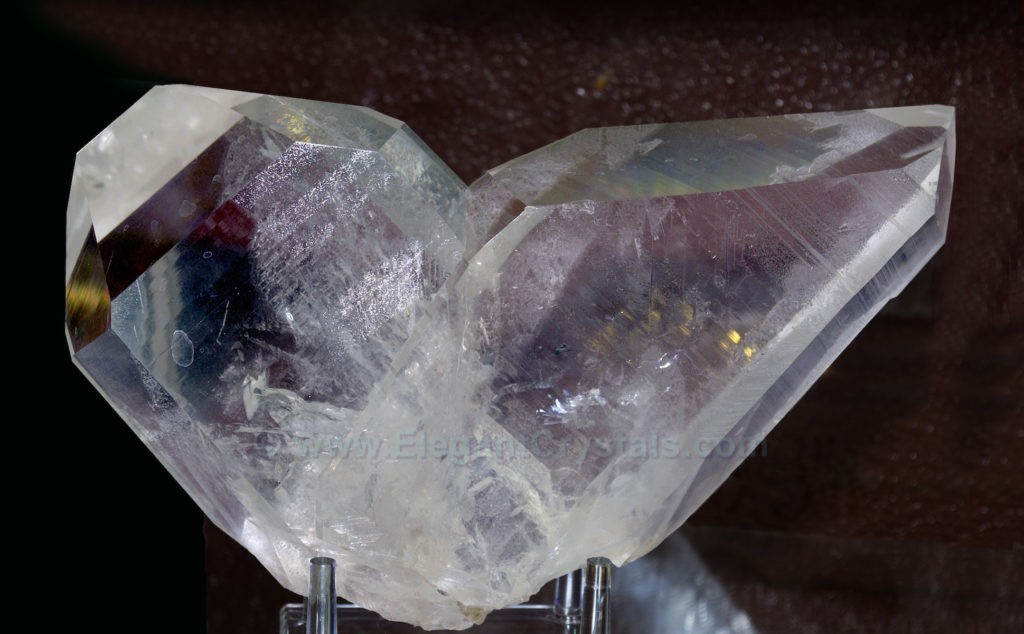
Picture #63
Six-inch-wide Brazilian Quartz with Japanese Twinning
This Japanese twin crystal is from Brazil.
In a normal cluster, the crystals can take on any angular relationship to each other.
However, the Japanese twins always have to fit together at this specific angle.
Then they grow into the flat shapes you see here.
Flat crystals, called tabular crystals or tabbies, can sometimes be found as individual stones, or in this case as conjoined twins.
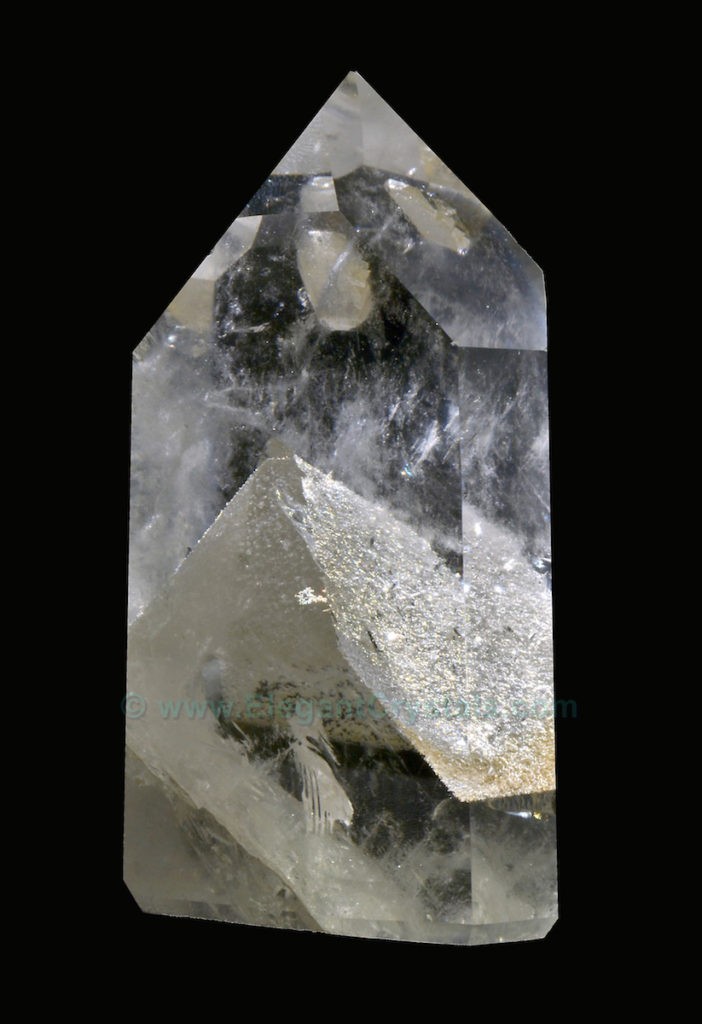
Picture #64
4-inch-tall Polished Brazilian Quartz with Drusy Phantoms
This highly polished Brazilian quartz crystal has great visibility from every side.
The crystal cutter who worked on it undoubtedly jumped for joy when the phantom formation first showed itself.
This pyramidal-shaped series of phantom layers includes fine white clay particles and thousands of tiny, faceted clear crystals.
These tiny crystals are called drusy quartz.
Drusy quartz usually occurs on the outside of minerals or other crystals.
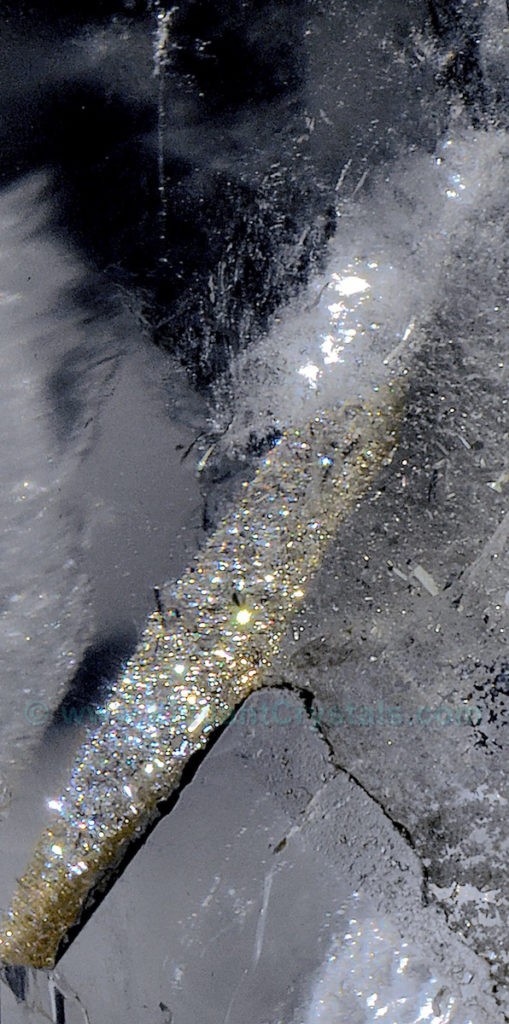
Picture #65
Close-up of Drusy Phantoms inside Brazilian Quartz
In this extreme close-up photo of the drusy phantom, you can see how the individual tiny crystals refract light into rainbow points of color.
